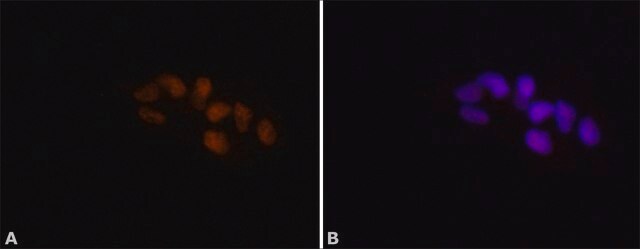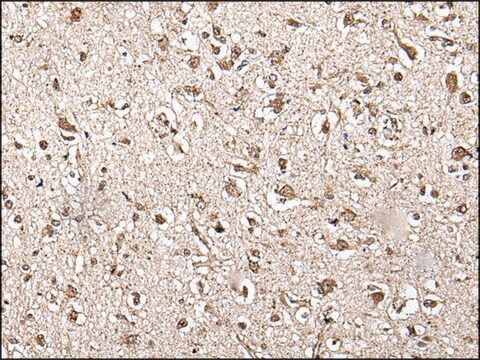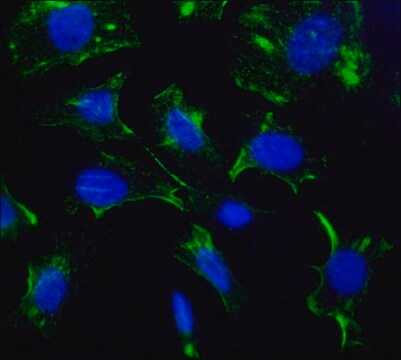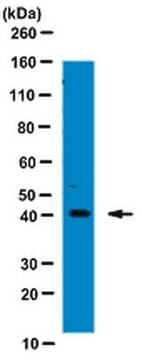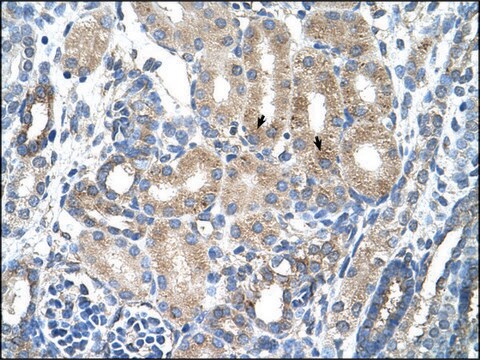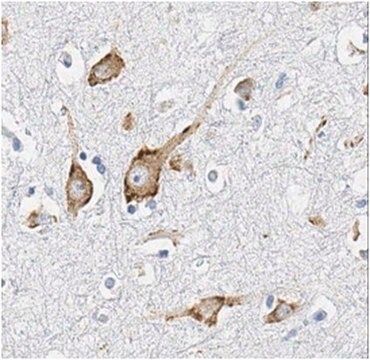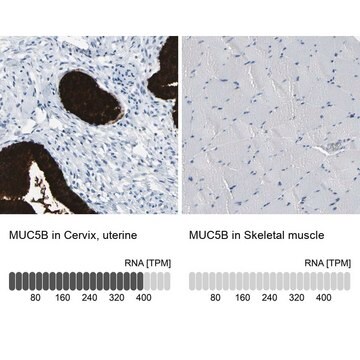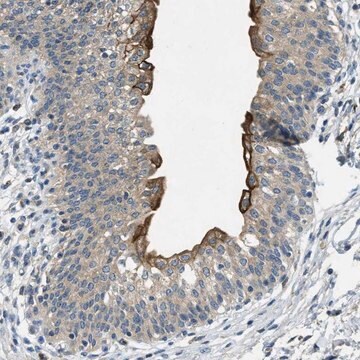Kluczowe dokumenty
SAB4200565
Monoclonal Anti-ZFP36/TTP antibody produced in mouse
clone TTP6, tissue culture supernatant
Synonim(y):
Anti-G0/G1 switch regulatory protein 24, Anti-G0S24, Anti-Growth factor-inducible nuclear protein NUP475, Anti-NUP475, Anti-RNF162A, Anti-TIS11, Anti-TIS11A, Anti-Zinc finger protein 36 homolog, Anti-tristetraprolin, Anti-zinc finger protein 36, C3H type, homolog (mouse), Anti-zinc finger protein, C3H type, 36 homolog (mouse)
About This Item
Polecane produkty
pochodzenie biologiczne
mouse
Poziom jakości
białko sprzężone
unconjugated
forma przeciwciała
tissue culture supernatant
rodzaj przeciwciała
primary antibodies
klon
TTP6, monoclonal
Formularz
buffered aqueous solution
masa cząsteczkowa
antigen ~45 kDa
reaktywność gatunkowa
mouse, bovine, rat, dog, human, monkey
metody
western blot: 1:4,000-1:8,000 using extracts of HepG2 cells.
numer dostępu UniProt
Warunki transportu
dry ice
temp. przechowywania
−20°C
docelowa modyfikacja potranslacyjna
unmodified
informacje o genach
human ... ZFP36(7538)
Powiązane kategorie
Opis ogólny
Immunogen
Zastosowanie
Działania biochem./fizjol.
Postać fizyczna
Oświadczenie o zrzeczeniu się odpowiedzialności
Nie możesz znaleźć właściwego produktu?
Wypróbuj nasz Narzędzie selektora produktów.
Kod klasy składowania
10 - Combustible liquids
Klasa zagrożenia wodnego (WGK)
WGK 3
Wybierz jedną z najnowszych wersji:
Certyfikaty analizy (CoA)
Nie widzisz odpowiedniej wersji?
Jeśli potrzebujesz konkretnej wersji, możesz wyszukać konkretny certyfikat według numeru partii lub serii.
Masz już ten produkt?
Dokumenty związane z niedawno zakupionymi produktami zostały zamieszczone w Bibliotece dokumentów.
Nasz zespół naukowców ma doświadczenie we wszystkich obszarach badań, w tym w naukach przyrodniczych, materiałoznawstwie, syntezie chemicznej, chromatografii, analityce i wielu innych dziedzinach.
Skontaktuj się z zespołem ds. pomocy technicznej